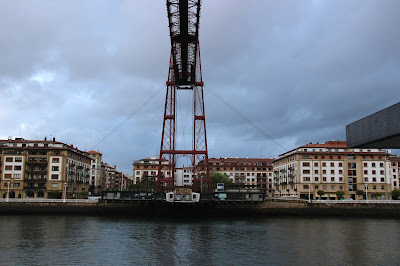Day 13
Bilbao to Santander
Up early to pack and load the car
before having breakfast in the Café Baque just opposite the hotel. We ate in here yesterday and it was so good
we decided to come back again this morning.
It was just as good today.
Then we picked up the car from
the car park and set off on the road to Santander. It was a lovely morning, we got out of town
easier today, thank goodness and soon we were cruising along an empty motorway
enjoying some magnificent scenery.
After just over an hour we
reached Santander and headed towards the ferry port where we booked in for the
crossing later in the day, parked in line then set off on foot to spend the day
in this beautiful city.
We walked along the front and met a charming lady called Monica who persuaded us to take a boat trip out to sea for an hour. We agreed but not just yet as we wanted to see a bit more of the front with the tall ships and a lot more.
We walked along the front and met a charming lady called Monica who persuaded us to take a boat trip out to sea for an hour. We agreed but not just yet as we wanted to see a bit more of the front with the tall ships and a lot more.
After this we stopped for a drink
in a great bar in one of the side streets.
It was called Cerveceria La Surens and we liked it so much we said we
would come back for lunch.
We then headed to the port and boarded the Regina Catorce for our pre-arranged boat trip. It was a great trip, we sat up front on deck for most of the journey and saw so much that we were surprised at around this lovely area.
Upon our return we walked back to the Cerveceria La Surens for a cracking lunch of Spanish food and wine
We then headed to the port and boarded the Regina Catorce for our pre-arranged boat trip. It was a great trip, we sat up front on deck for most of the journey and saw so much that we were surprised at around this lovely area.
Upon our return we walked back to the Cerveceria La Surens for a cracking lunch of Spanish food and wine
After this is was time to walk
back to the port and find our car as we sat in line awaiting our time to
board. The Brittany ferry, The Pont-Aven
was a massive vessel and it took some time to board, but once we were on we had
a drink in the bar before taking everything to our cabin which would be our
home for the next 24 hours.
Time then to explore the ship
before having dinner in the Le Flora restaurant and relaxing for the rest of
the evening.
Our trip is now over, we will be back in the UK tomorrow so I am signing off until November when it will be about our short trip to La Villajoyosa, back here in Spain.
























































